
Building products manufacturer Simpson (NYSE:SSD) announced better-than-expected revenue in Q1 CY2025, with sales up 1.6% year on year to $538.9 million. Its GAAP profit of $1.85 per share was 18.1% above analysts’ consensus estimates.
Is now the time to buy Simpson? Find out by accessing our full research report, it’s free.
Simpson (SSD) Q1 CY2025 Highlights:
- Revenue: $538.9 million vs analyst estimates of $528.5 million (1.6% year-on-year growth, 2% beat)
- EPS (GAAP): $1.85 vs analyst estimates of $1.57 (18.1% beat)
- Adjusted EBITDA: $121.8 million vs analyst estimates of $114.2 million (22.6% margin, 6.6% beat)
- Operating Margin: 19%, in line with the same quarter last year
- Market Capitalization: $6.44 billion
"Our first quarter net sales reflected modest growth over the prior year in a highly uncertain macroeconomic environment in both the U.S. and Europe," commented Mike Olosky, President and Chief Executive Officer of Simpson Manufacturing Co.
Company Overview
Aiming to build safer and stronger buildings, Simpson (NYSE:SSD) designs and manufactures structural connectors, anchors, and other construction products.
Sales Growth
Reviewing a company’s long-term sales performance reveals insights into its quality. Any business can put up a good quarter or two, but the best consistently grow over the long haul. Over the last five years, Simpson grew its sales at an exceptional 14.1% compounded annual growth rate. Its growth beat the average industrials company and shows its offerings resonate with customers.
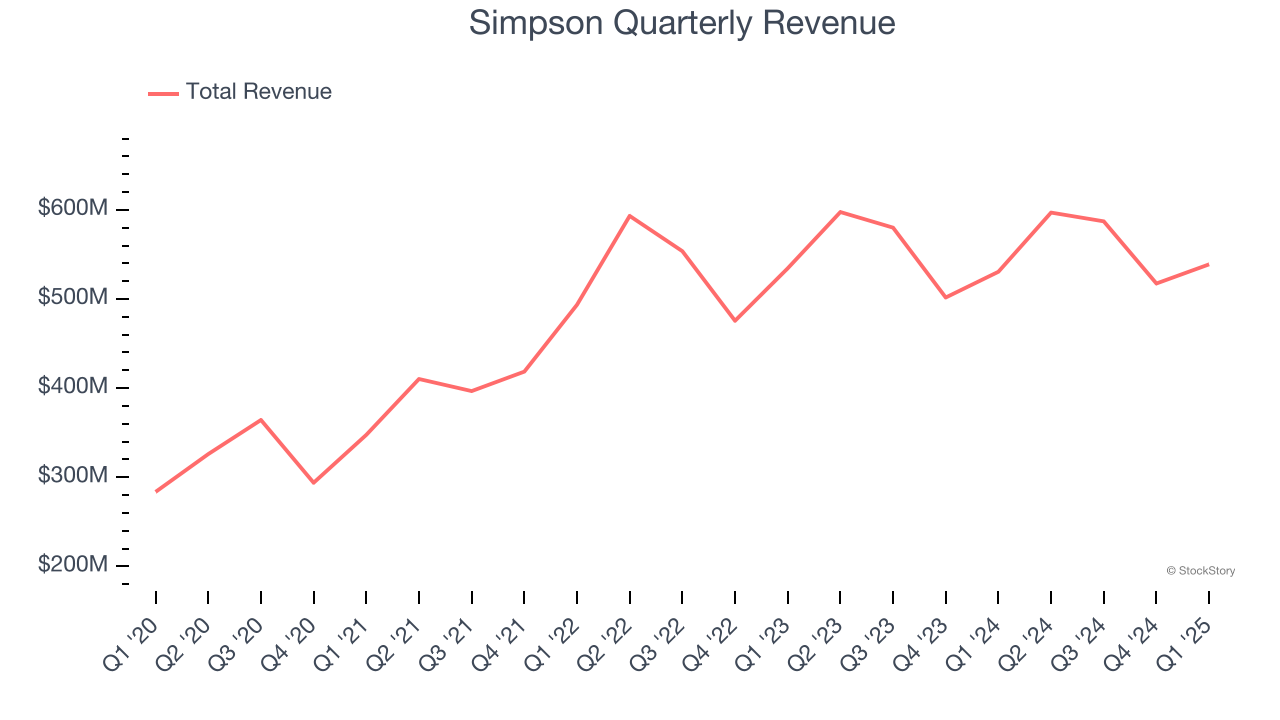
We at StockStory place the most emphasis on long-term growth, but within industrials, a half-decade historical view may miss cycles, industry trends, or a company capitalizing on catalysts such as a new contract win or a successful product line. Simpson’s recent performance shows its demand has slowed significantly as its annualized revenue growth of 1.9% over the last two years was well below its five-year trend. We also note many other Home Construction Materials businesses have faced declining sales because of cyclical headwinds. While Simpson grew slower than we’d like, it did do better than its peers. 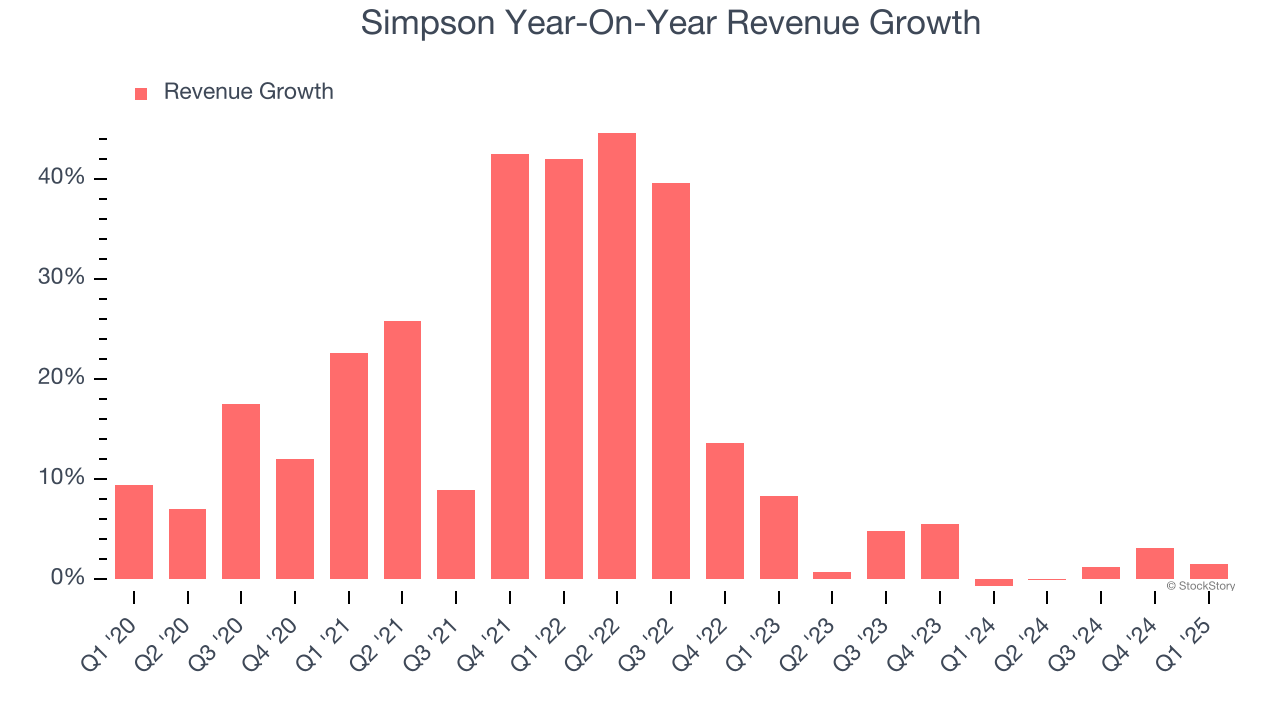
This quarter, Simpson reported modest year-on-year revenue growth of 1.6% but beat Wall Street’s estimates by 2%.
Looking ahead, sell-side analysts expect revenue to grow 4.2% over the next 12 months. Although this projection indicates its newer products and services will catalyze better top-line performance, it is still below average for the sector.
Unless you’ve been living under a rock, it should be obvious by now that generative AI is going to have a huge impact on how large corporations do business. While Nvidia and AMD are trading close to all-time highs, we prefer a lesser-known (but still profitable) stock benefiting from the rise of AI. Click here to access our free report one of our favorites growth stories.
Operating Margin
Simpson has been a well-oiled machine over the last five years. It demonstrated elite profitability for an industrials business, boasting an average operating margin of 21.5%. This result isn’t surprising as its high gross margin gives it a favorable starting point.
Looking at the trend in its profitability, Simpson’s operating margin might fluctuated slightly but has generally stayed the same over the last five years. This raises questions about the company’s expense base because its revenue growth should have given it leverage on its fixed costs, resulting in better economies of scale and profitability.
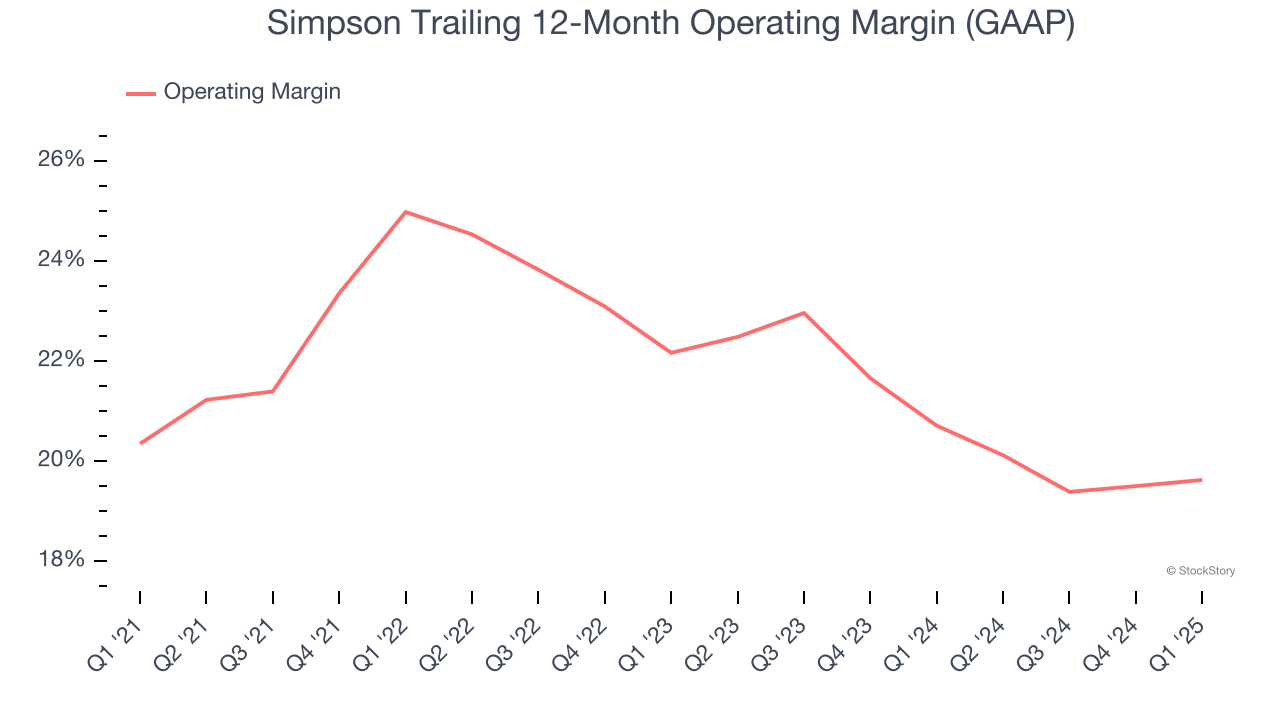
This quarter, Simpson generated an operating profit margin of 19%, in line with the same quarter last year. This indicates the company’s cost structure has recently been stable.
Earnings Per Share
We track the long-term change in earnings per share (EPS) for the same reason as long-term revenue growth. Compared to revenue, however, EPS highlights whether a company’s growth is profitable.
Simpson’s EPS grew at an astounding 18.3% compounded annual growth rate over the last five years, higher than its 14.1% annualized revenue growth. However, this alone doesn’t tell us much about its business quality because its operating margin didn’t expand.
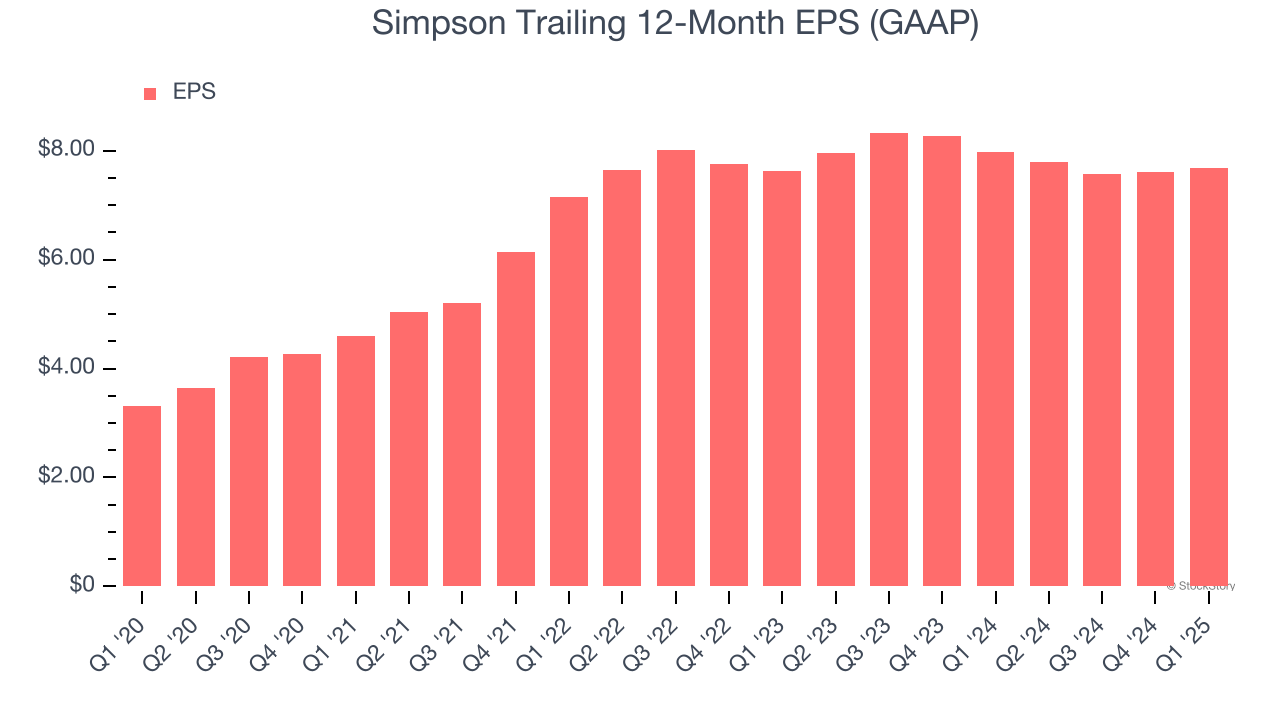
We can take a deeper look into Simpson’s earnings quality to better understand the drivers of its performance. A five-year view shows that Simpson has repurchased its stock, shrinking its share count by 5.1%. This tells us its EPS outperformed its revenue not because of increased operational efficiency but financial engineering, as buybacks boost per share earnings. 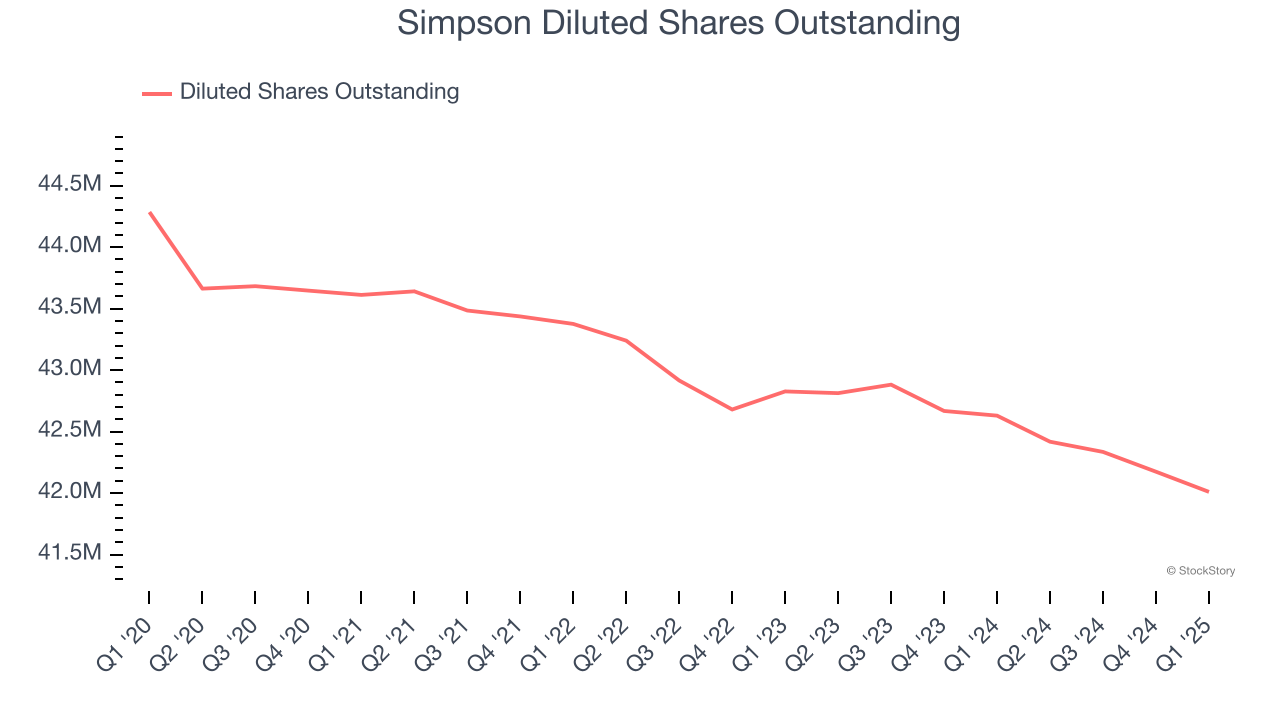
Like with revenue, we analyze EPS over a more recent period because it can provide insight into an emerging theme or development for the business.
For Simpson, EPS didn’t budge over the last two years, a regression from its five-year trend. We hope it can revert to earnings growth in the coming years.
In Q1, Simpson reported EPS at $1.85, up from $1.77 in the same quarter last year. This print easily cleared analysts’ estimates, and shareholders should be content with the results. Over the next 12 months, Wall Street expects Simpson’s full-year EPS of $7.68 to grow 8.7%.
Key Takeaways from Simpson’s Q1 Results
We enjoyed seeing Simpson beat analysts’ revenue, EPS, and EBITDA expectations this quarter. Zooming out, we think this was a solid quarter. The stock remained flat at $155 immediately following the results.
Sure, Simpson had a solid quarter, but if we look at the bigger picture, is this stock a buy? When making that decision, it’s important to consider its valuation, business qualities, as well as what has happened in the latest quarter. We cover that in our actionable full research report which you can read here, it’s free.
